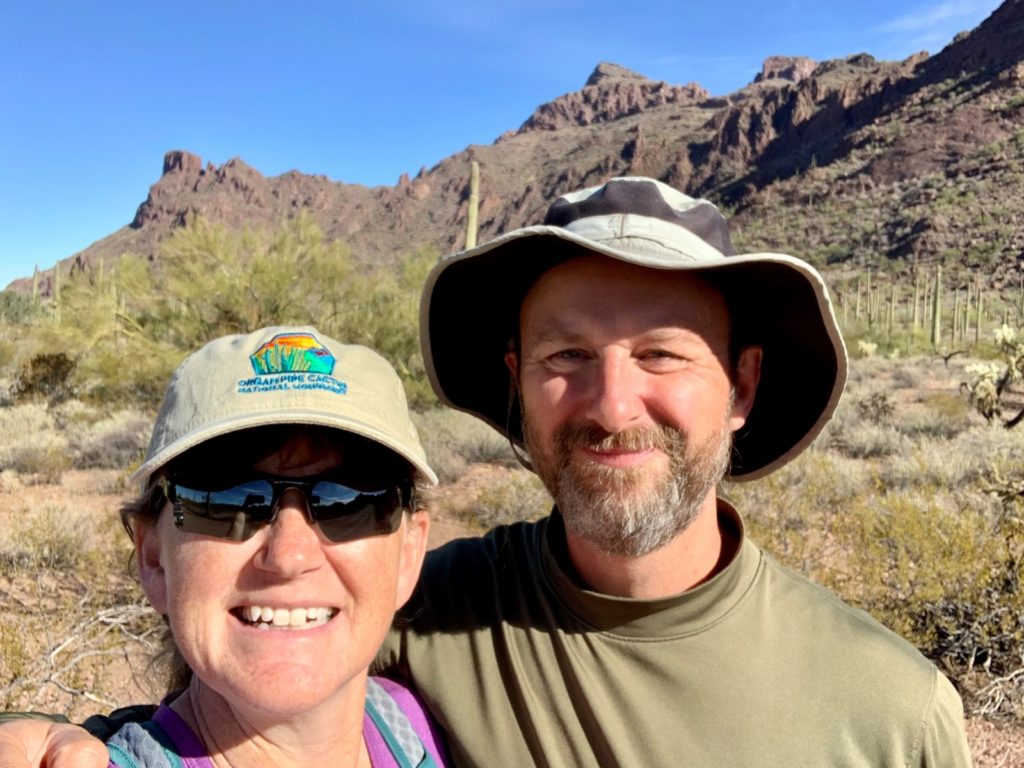During our week at Organ Pipe Cactus National Monument, we hiked the majority of the Monument’s designated trails. The Victoria Mine Trail and Alamo Canyon Trail were two of our first hikes. Together they gave us a great introduction to the Sonoran Desert ecosystem and human history of the park.

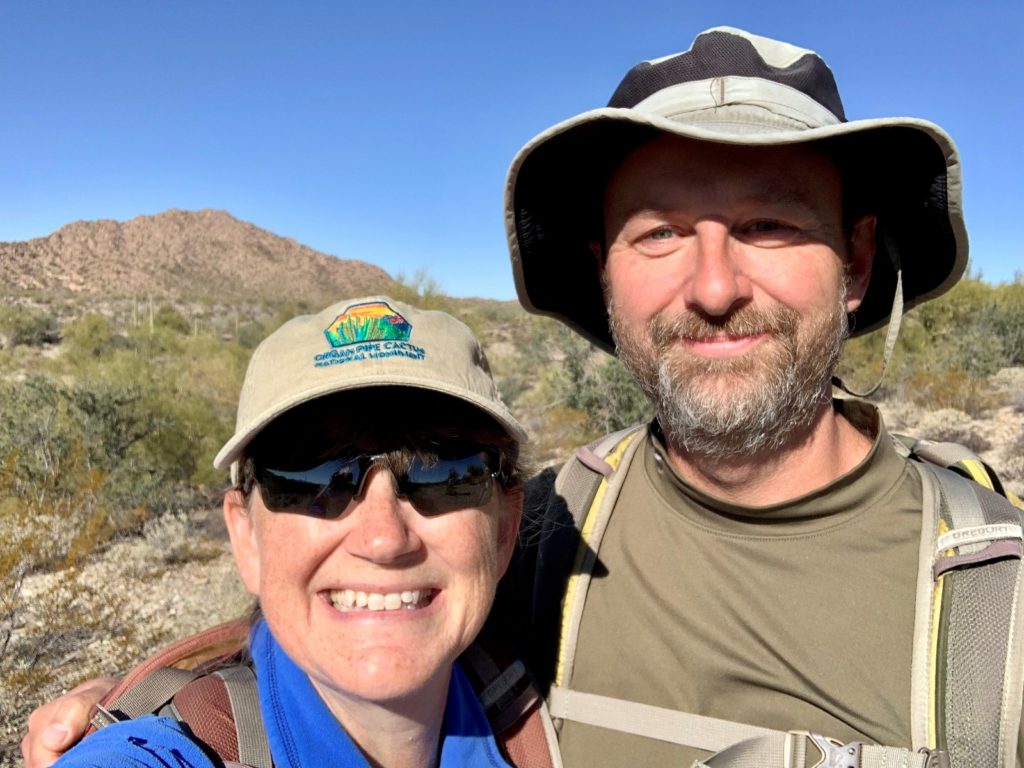
Victoria Mine Trail
The Victoria Mine Trail takes visitors to one of the oldest gold and silver prospecting sites in southwest Arizona. Mine shafts, the remains of the store building, tailings, and other artifacts of the once robust operation remain. Along the way, hikers enjoy broad desert views from the bajadas of the Puerto Blanco and Sonoyta Mountains. Easy access and abundant saguaro, cholla, and organ pipe cactus alongside the trail make this one of the more popular hikes in the Monument.

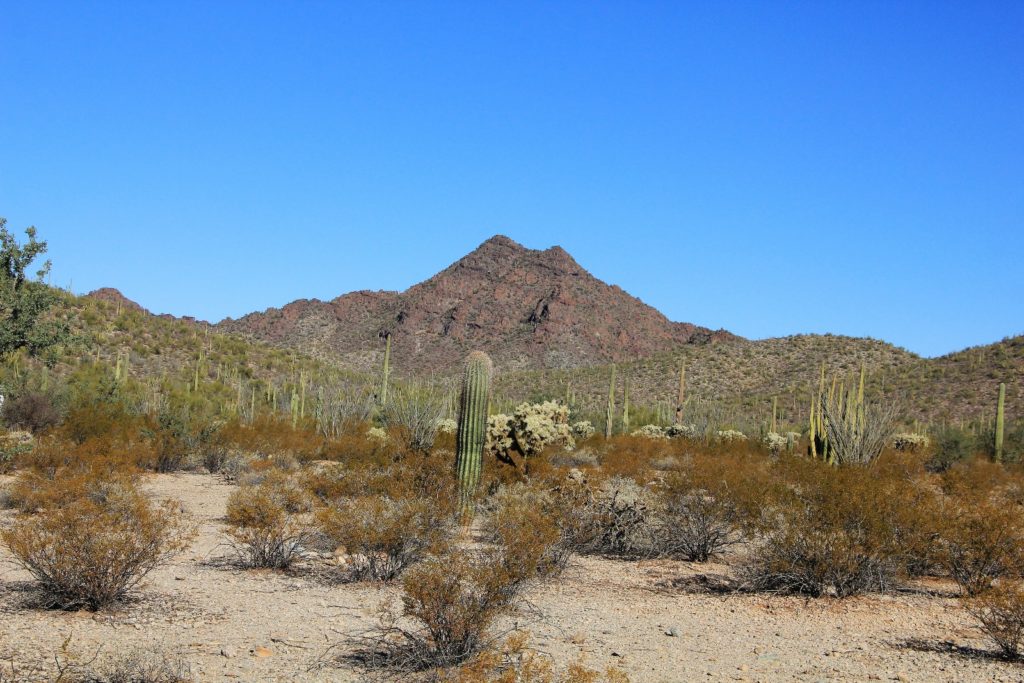
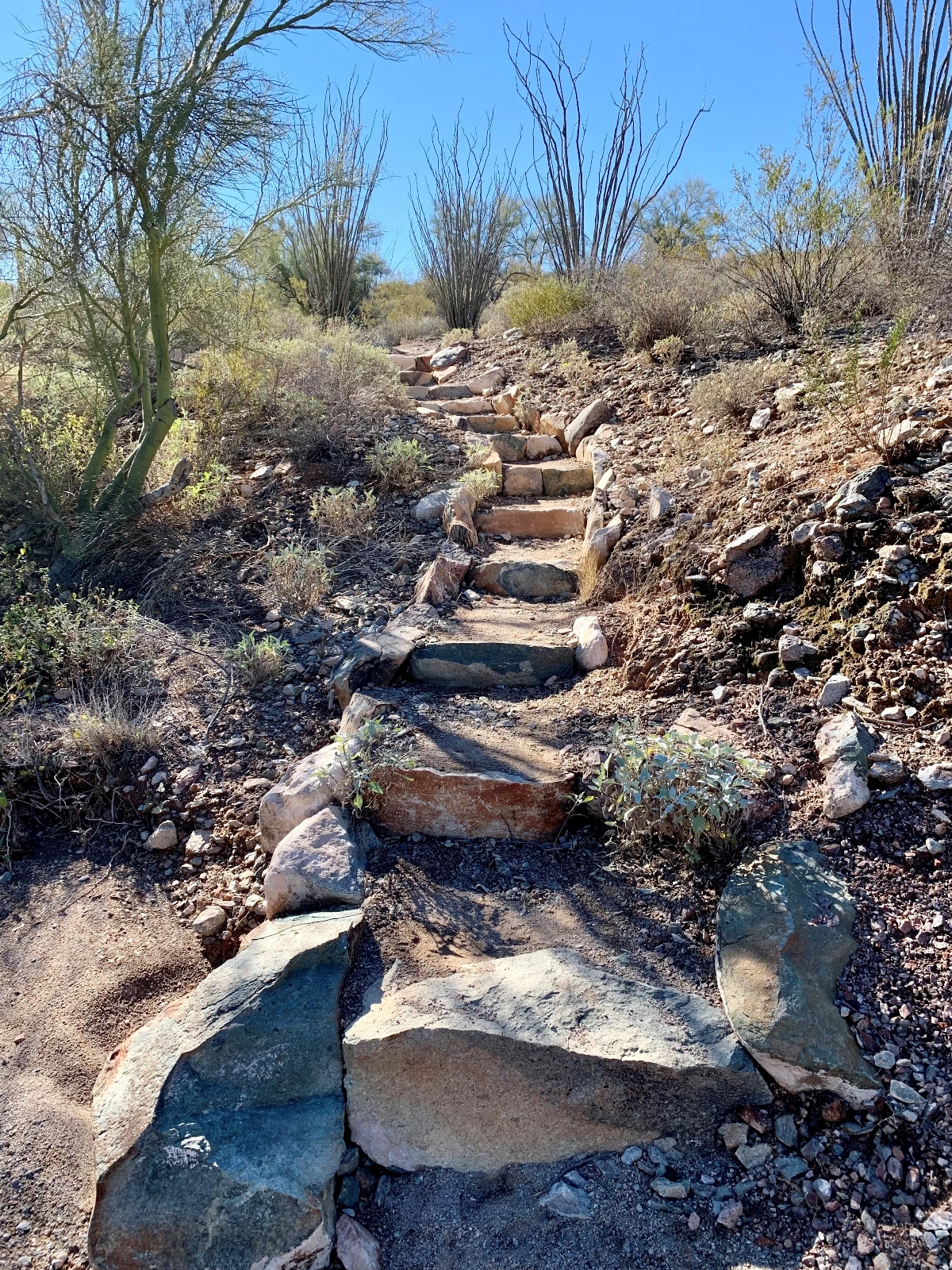
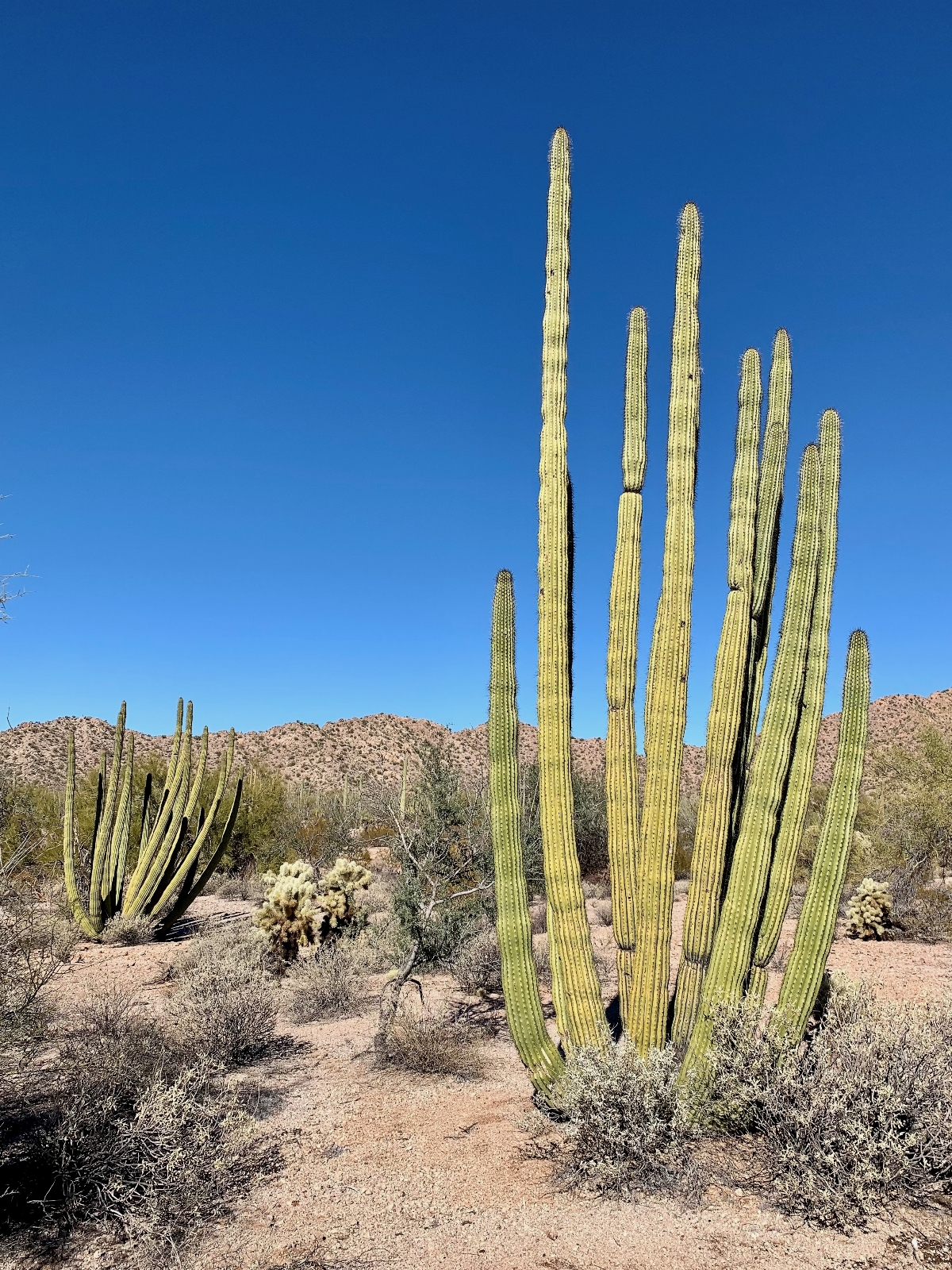
The Victoria Mine Trail starts at the Twin Peaks Campground. The trail is rated easy to moderate by the National Park Service and is generally flat, but does include some ups and downs while crossing arroyos (washes). Some sections of the trail are rocky with unstable footing. The trail intersects with an old mine road after 1.8 miles. Turn left there and continue one-third mile to Victoria Mine.
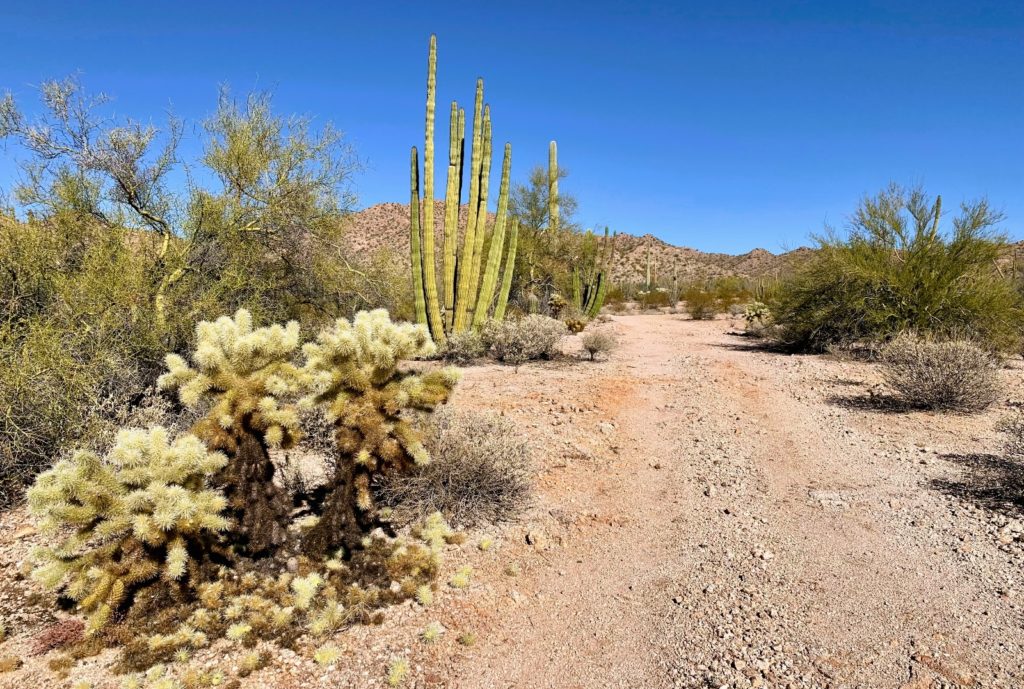
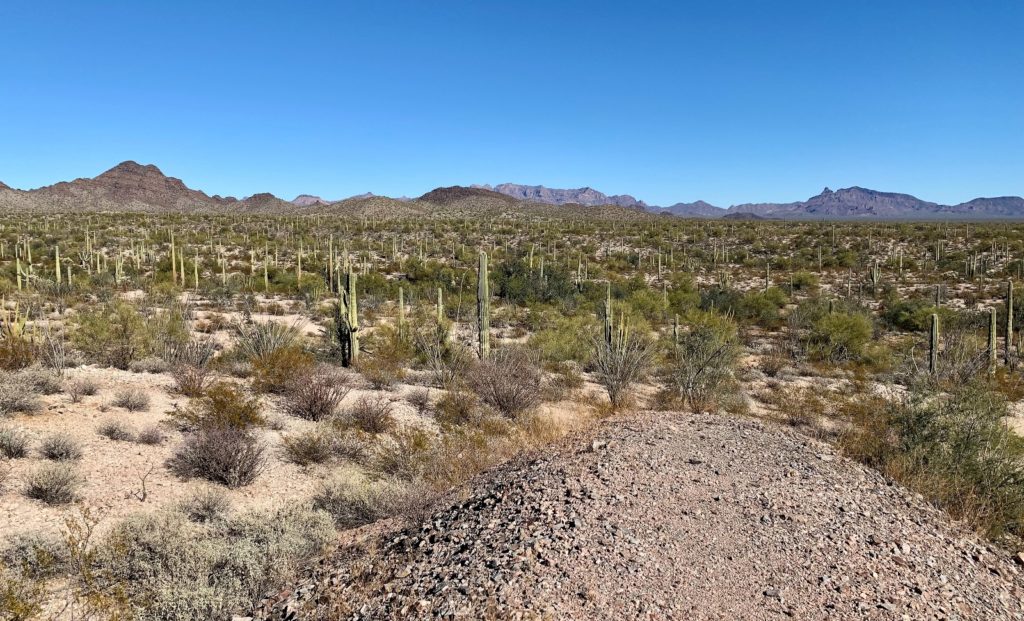
The history of the establishment of Victoria Mine is unknown, but it rose to prominence when Cipriano Ortega, a notorious businessman in Mexico, acquired the mine in 1880. Under Ortega, the mine was known as “La Americana,” and brought in about $80,000 worth of silver ore. Ortega carried an unsavory reputation and some accounts say he was a ruthless gunman and had killed several men. In 1899, Mikul G. Levy, an American businessman who operated several mines in Ajo and Sonora, purchased the mine. He also operated several general stores, including one in Ajo and one at Quitobaquito. He renamed the mine “La Victoria” in honor of Victoria Leon, the wife of his storekeeper.
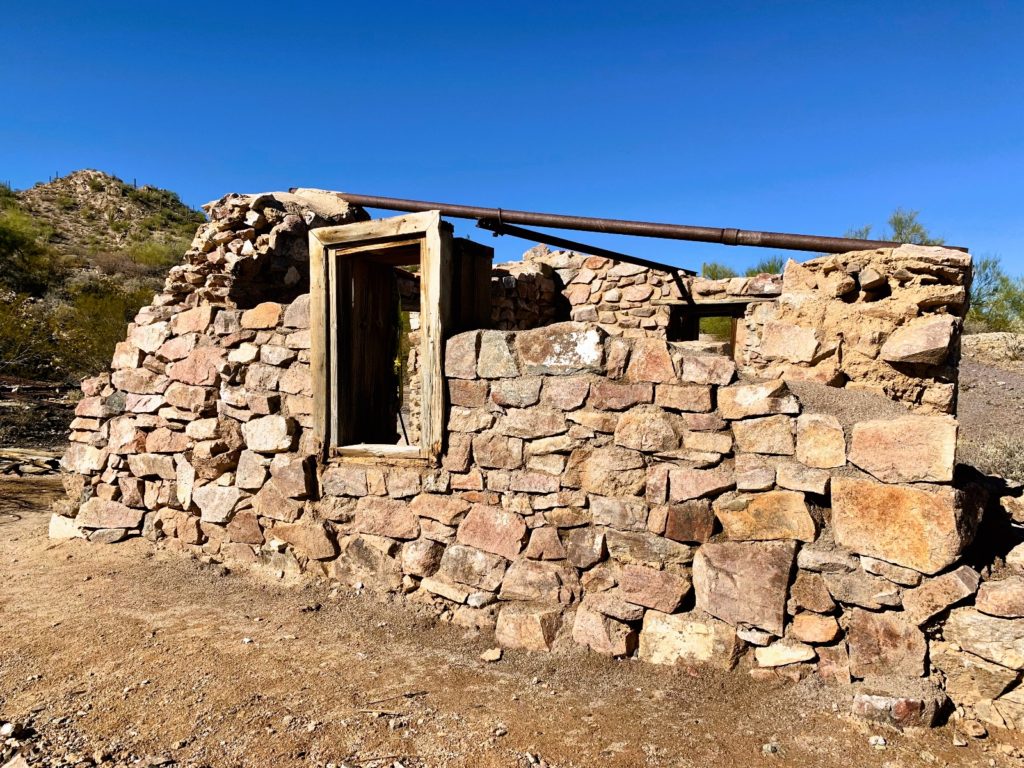
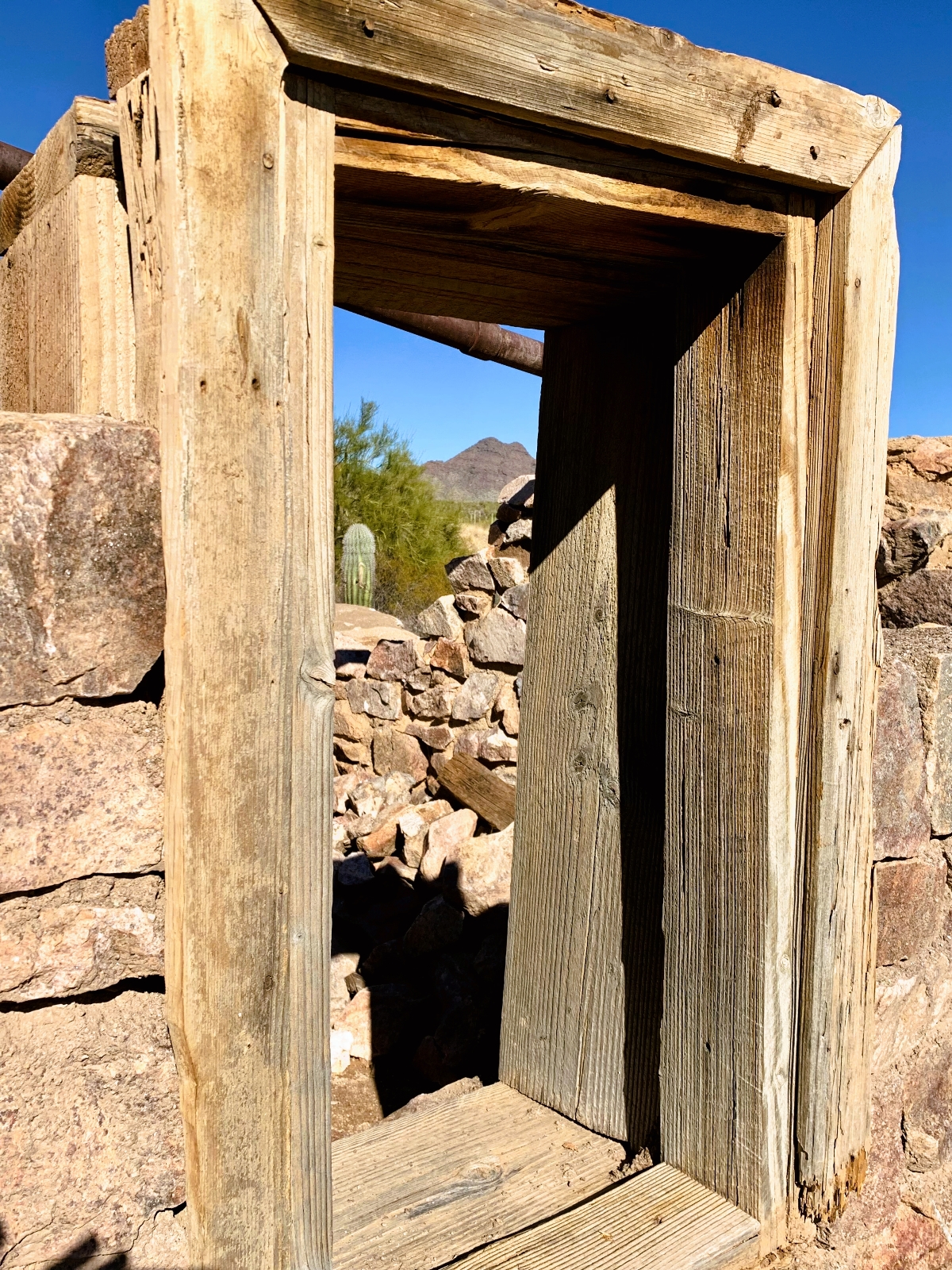
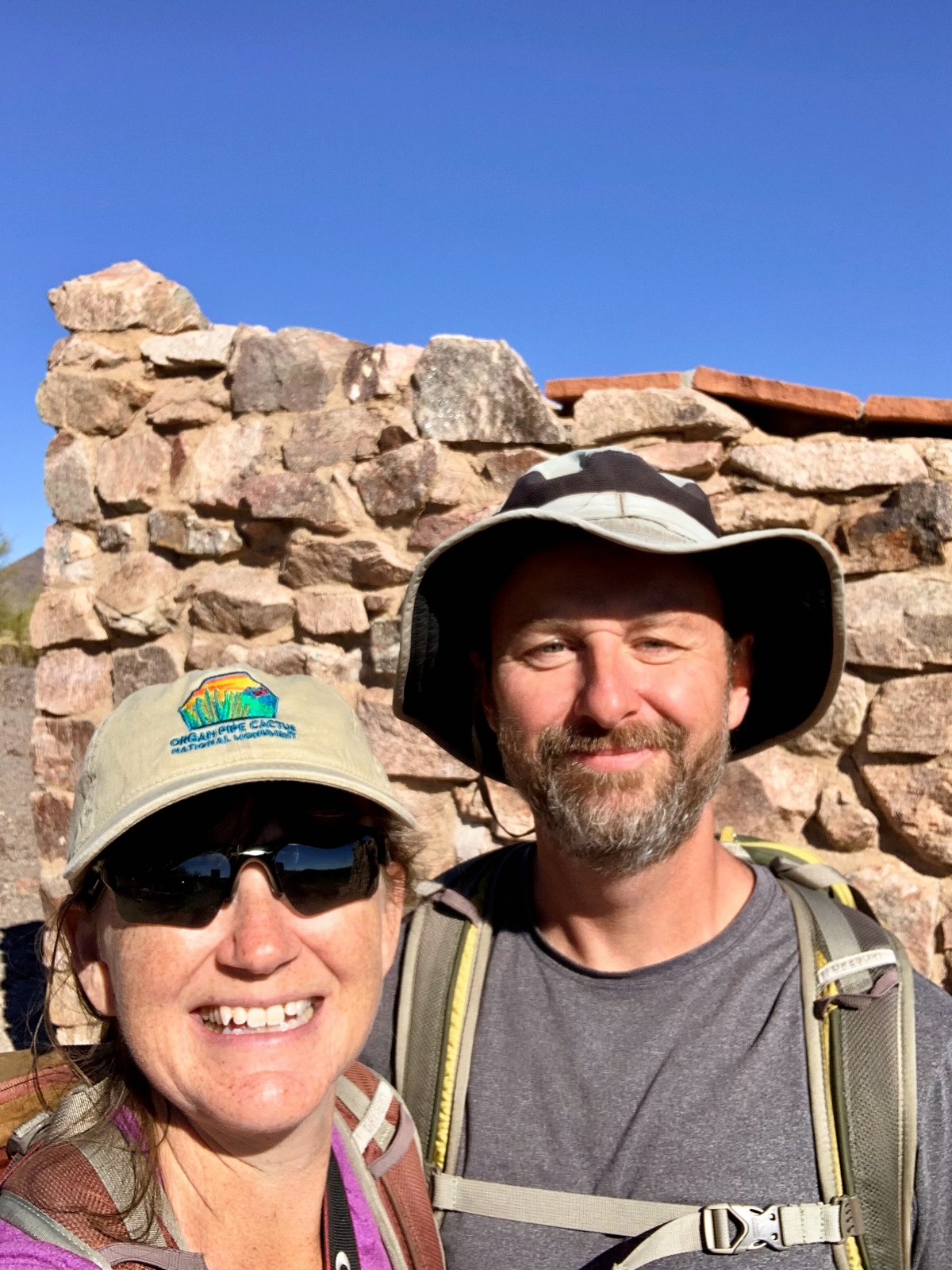
Peak mining activity occurred between the 1890s and 1910s, though sporadic mining efforts took place until 1976 under special use permits from the National Park Service. When Organ Pipe Cactus National Monument was designated a wilderness area in 1976, mining ceased. Today, all mine shafts are closed and fenced off. For your safety do not enter the mine.
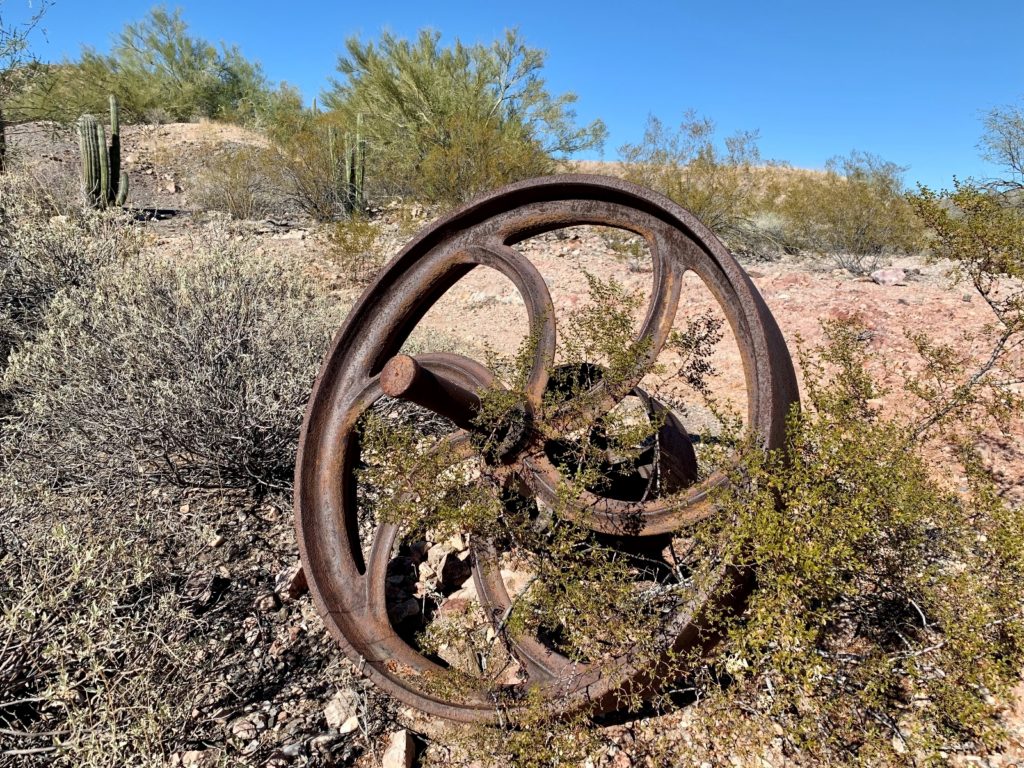
Those looking for a lengthier hike can continue 1.8 miles to Lost Cabin, another silver mine tucked away in the Puerto Blanco mountains. The site features the remains of a stone mining house that served the mines in the hills above. The trail to Lost Cabin is primitive and climbs over a small hill providing great views of the Sonoyta Mountains to the south. This was our favorite part of the hike and we recommending adding this segment if your are up for an 8.0 mile hike. To return to the campground, either retrace your steps or take the social trail shortcut that climbs a ridge directly east of the Lost Cabin mines.
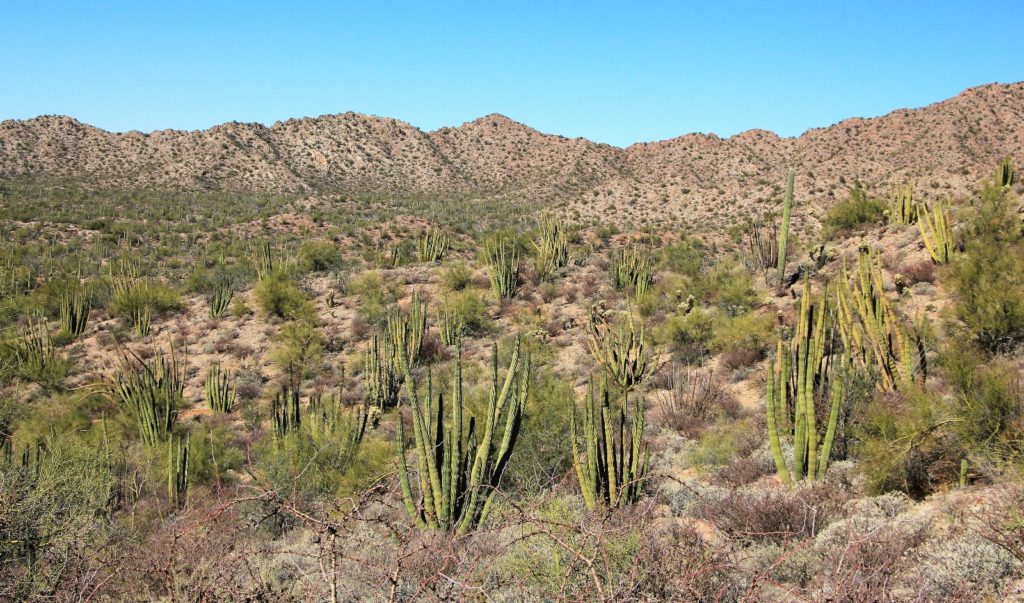
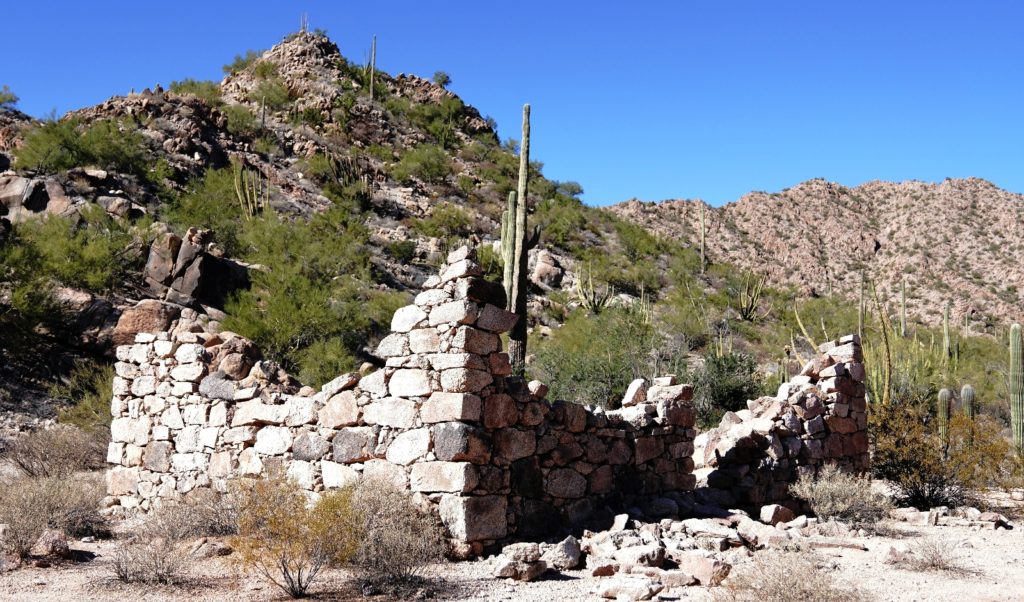
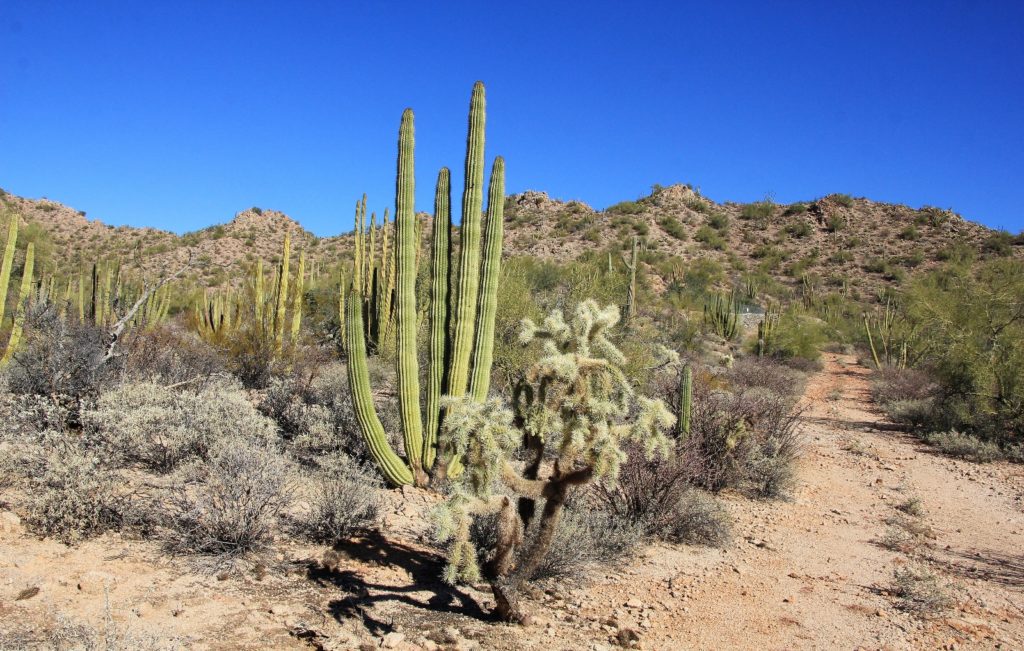
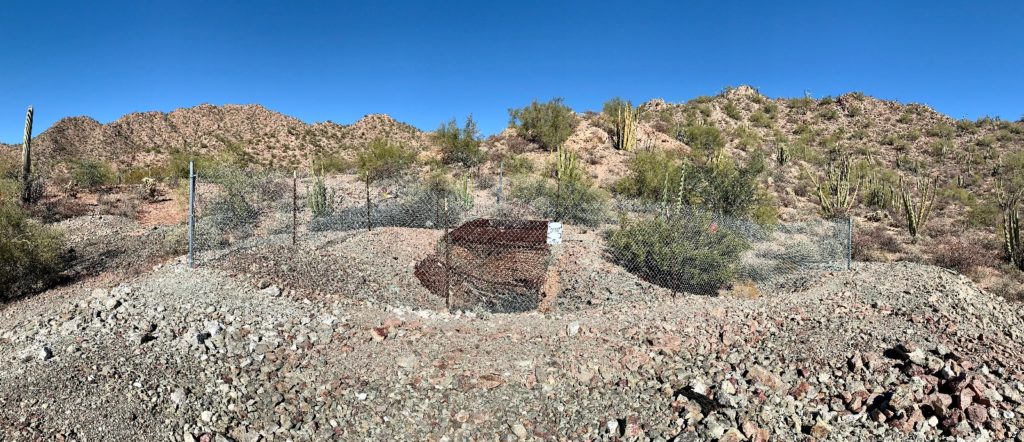
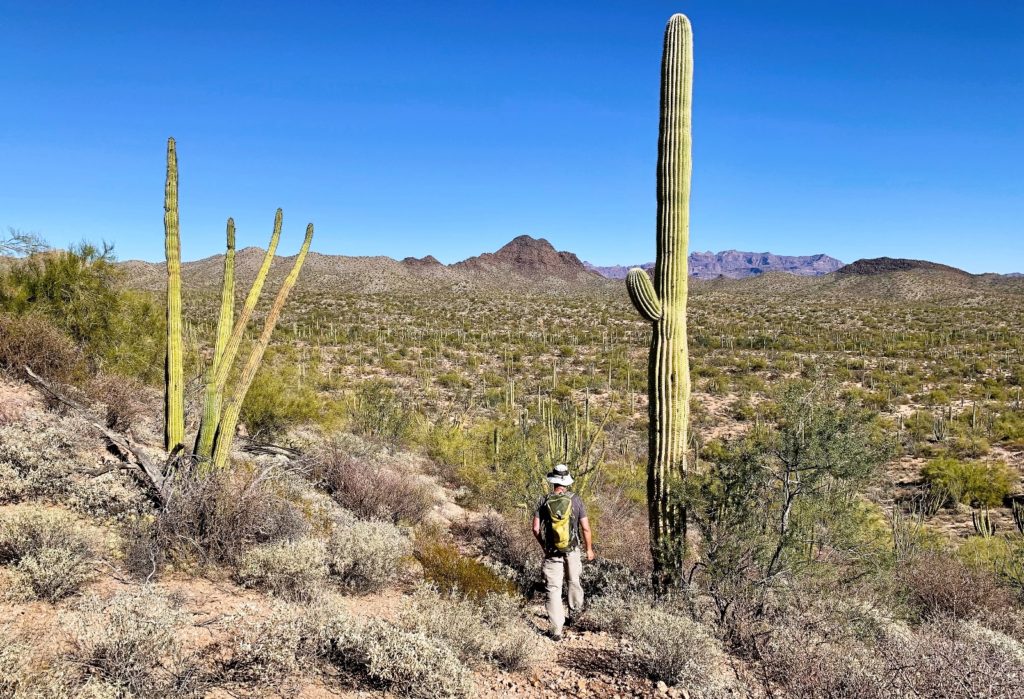
Alamo Canyon Trail
The Alamo Canyon Trail follows an old road to an abandoned ranch house and corral. Alamo Canyon is gorgeous and the organ pipe cactus here are extra impressive making this trail worthy for both its historic and scenic value. Though the maintained trial ends at the corral, Alamo Canyon splits into three forks beyond the corral. There are social trails in the washes of the north and south forks of Alamo Canyon.
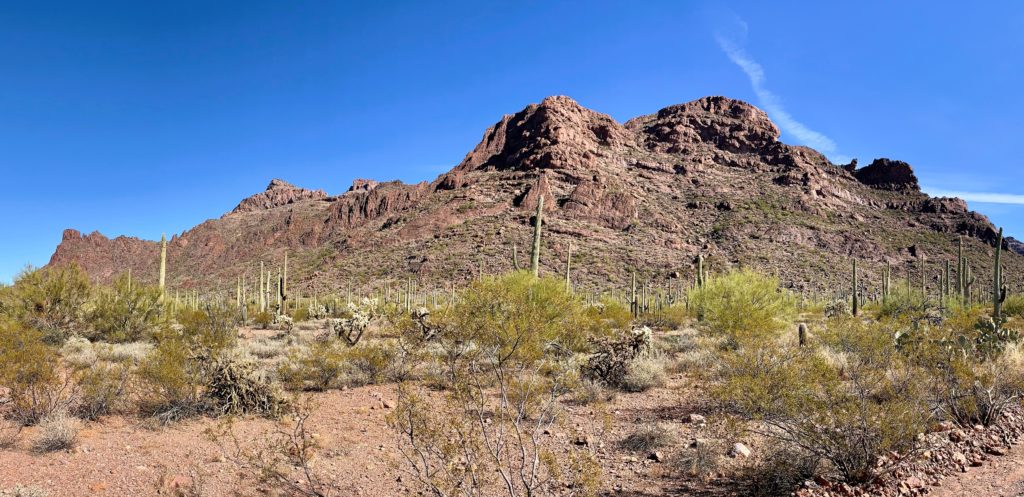
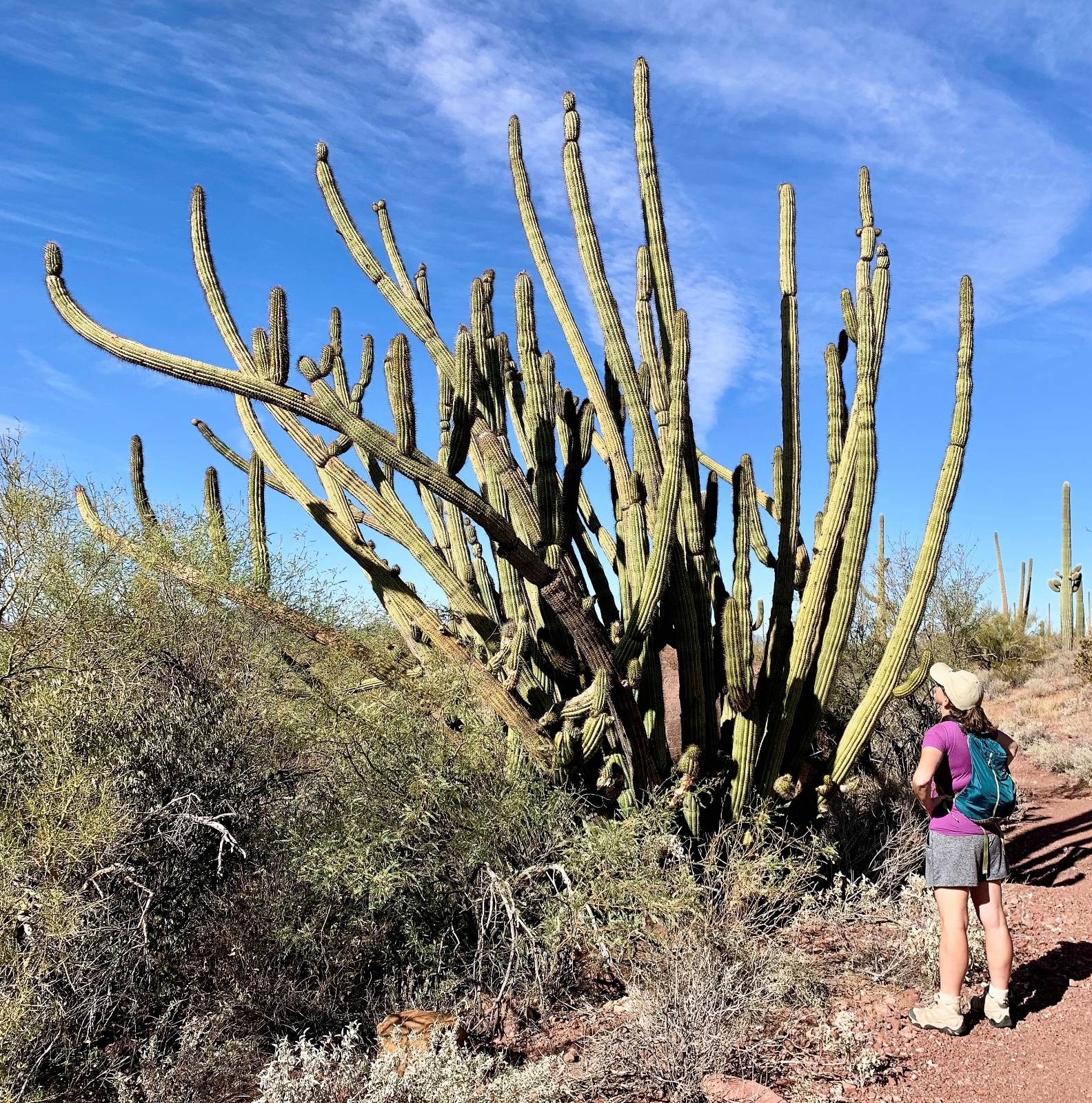
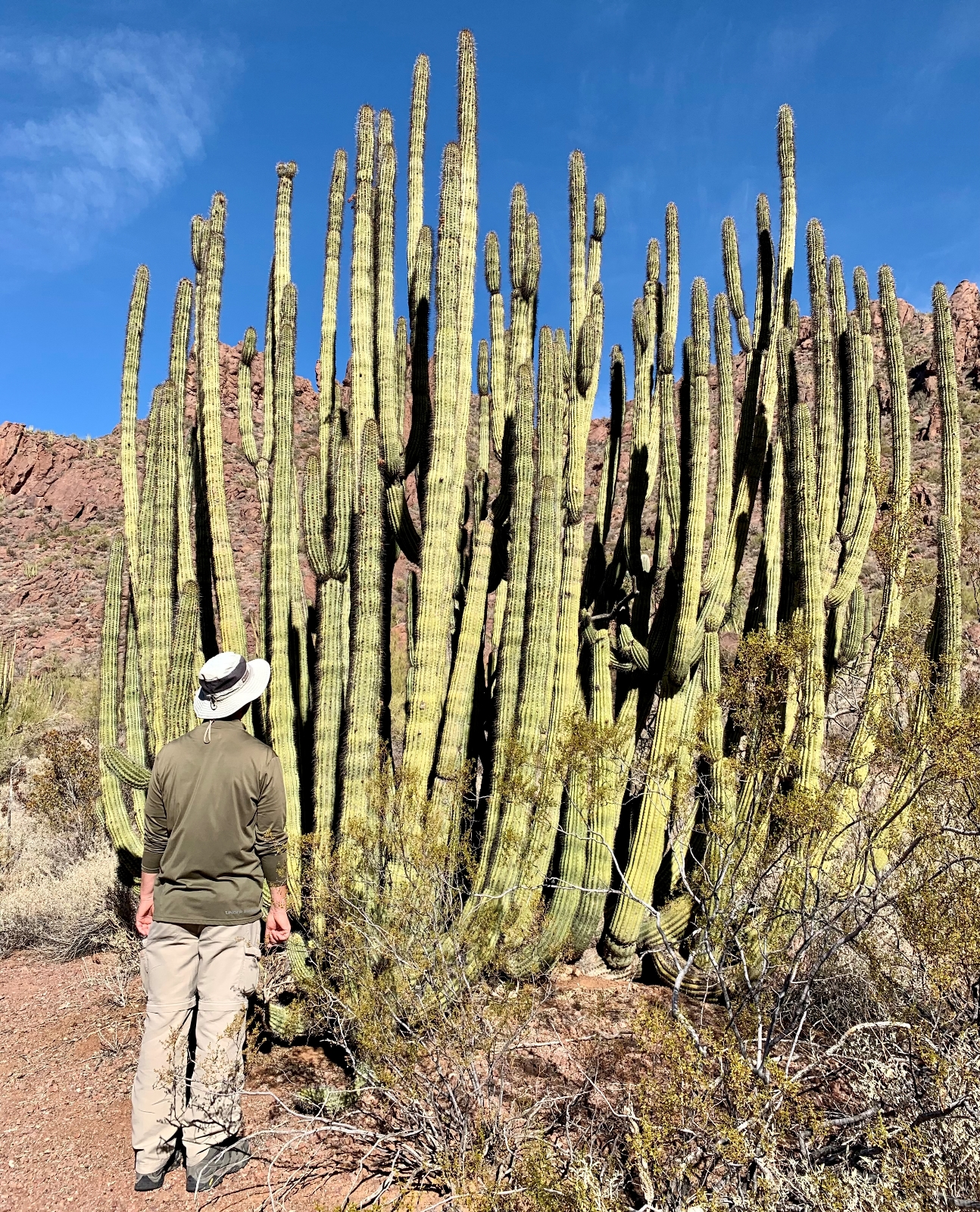
This 1.8 mile roundtrip hike is rated as easy to moderate by the Park Service. With such a short distance and virtually no elevation change, we’d rate this one as easy. The only real concern here is some rocky footing over flat ground.
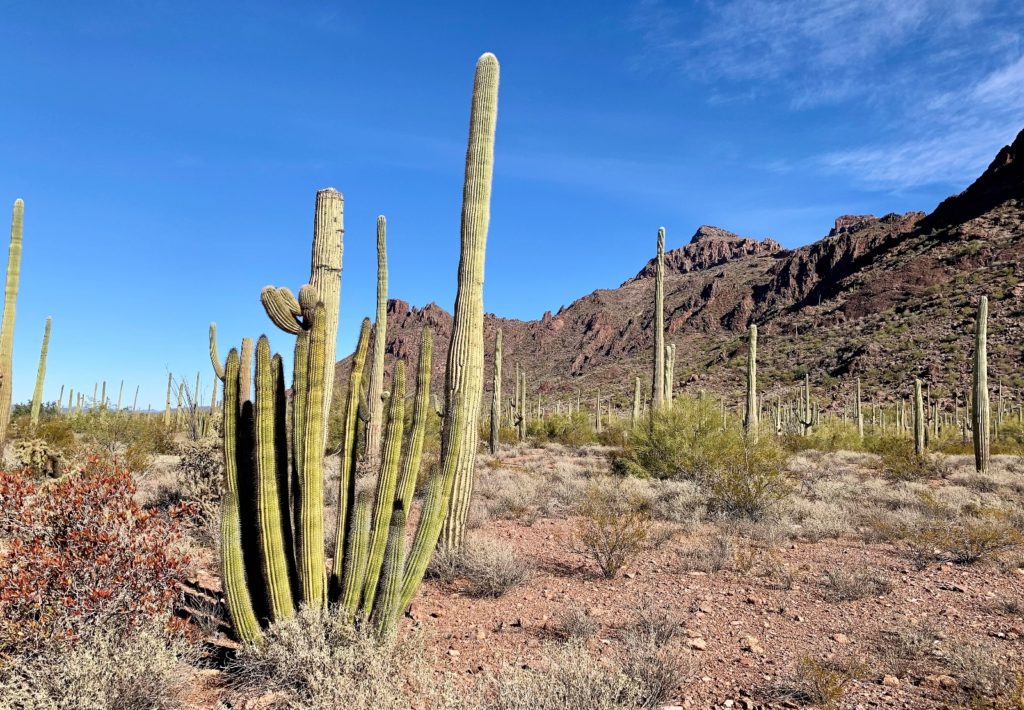
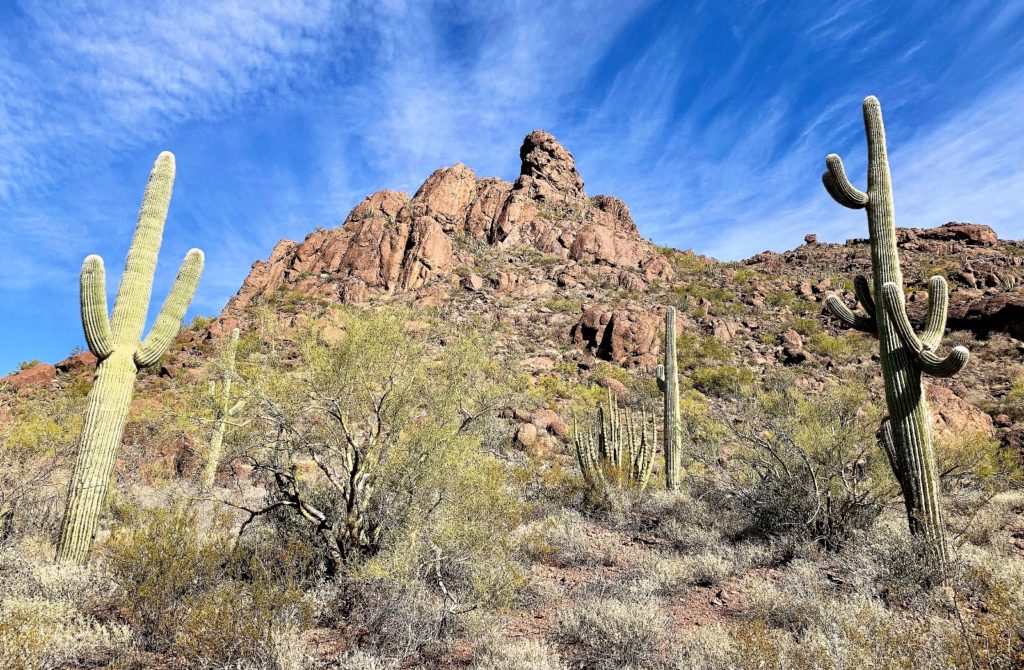
About three-quarters of a mile up the trail are the remains of an old brick building, the ranch house used by the Gray family’s ranching operation in the early 1900s. Continuing past the ranch house a short distance, hikers will find the remains of an old well and corral. In wet years, a small stream runs in Alamo wash during the winter and early spring making this a great place to see wildflowers and wildlife, especially birds.
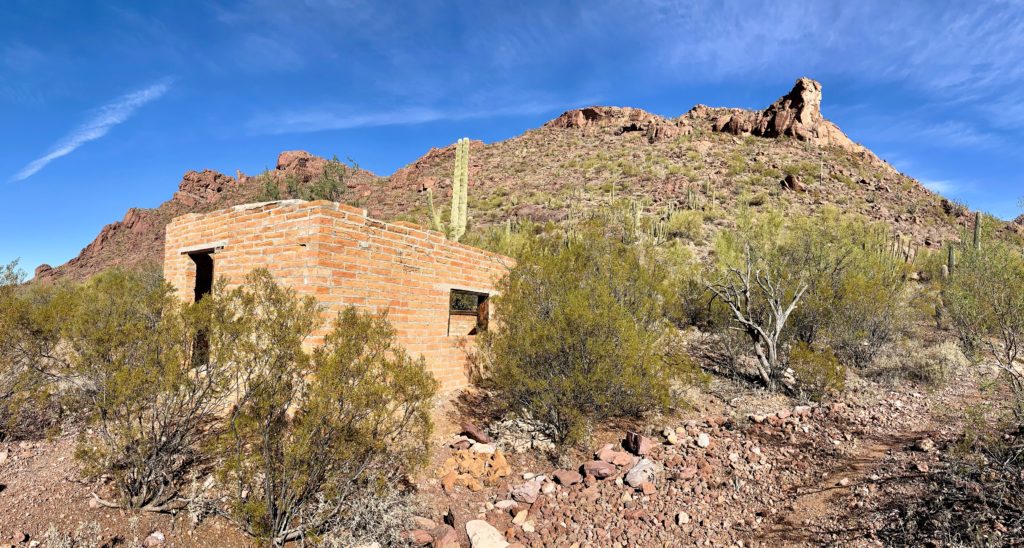
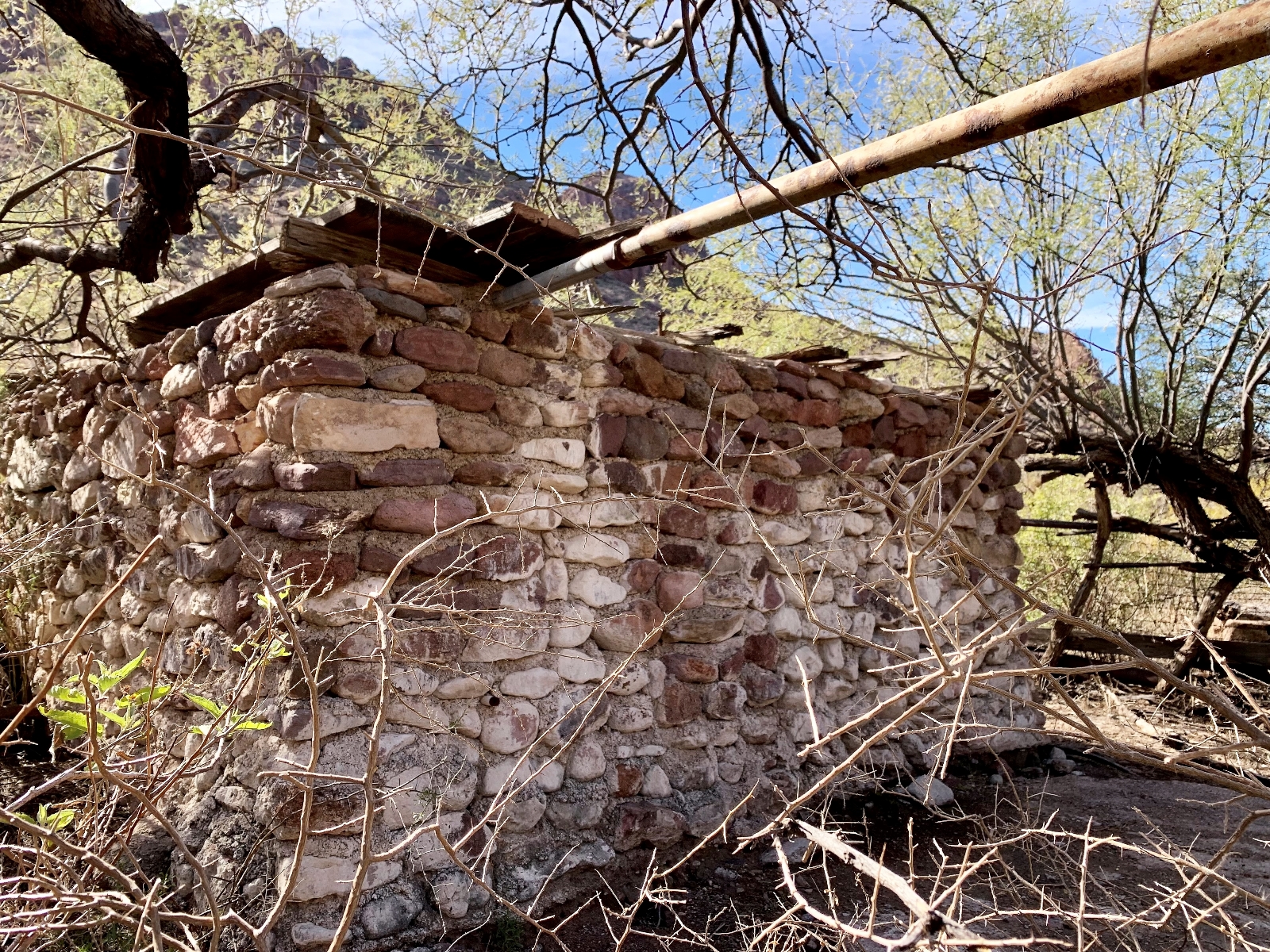
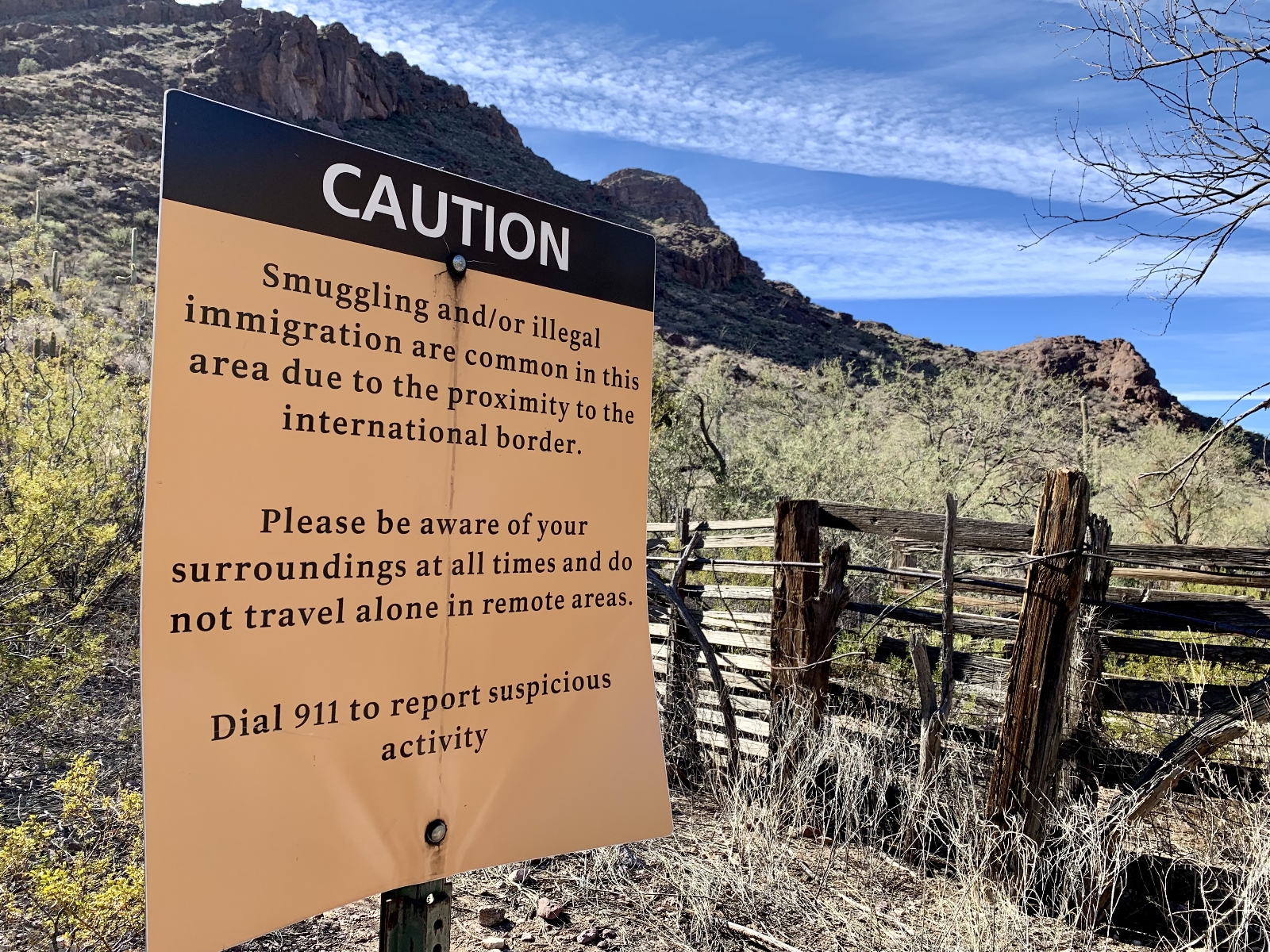
The trailhead is located at the end of the Alamo Canyon Road next to the Alamo Canyon Campground. The road is a three mile graded dirt road, suitable for all cars. Alamo Canyon Road is located at milepost 65.5 on the east side of Highway 85. Parking is extremely limited at the trailhead (please do not park in campsites). We had to drive a short distance back toward the highway to a pull-out.
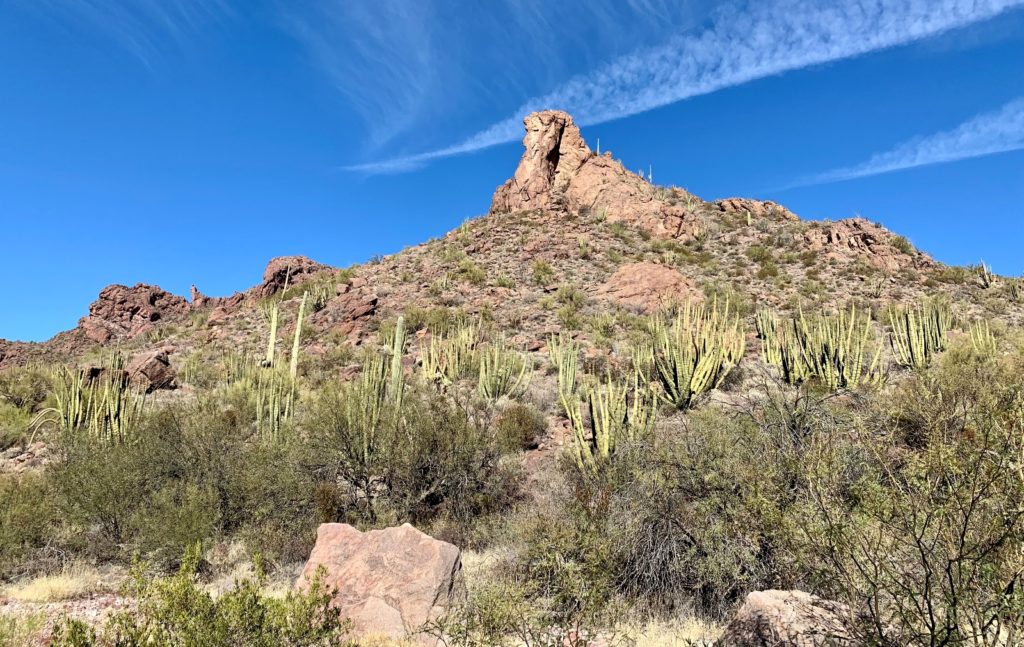
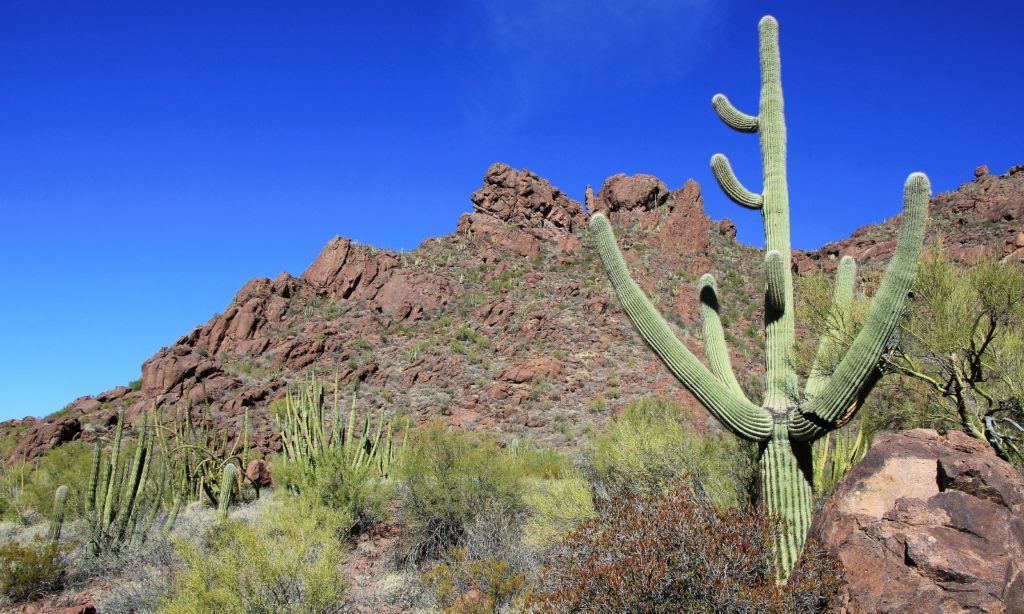
If you only have time for one short hike in Organ Pipe Cactus National Monument, Alamo Canyon would be my recommendation. It is a quick and easy trail with some nice historical buildings in a spectacular canyon. Best of all, it is a great area for viewing the park’s namesake cactus, the organ pipe and maybe even a rare bird or two.
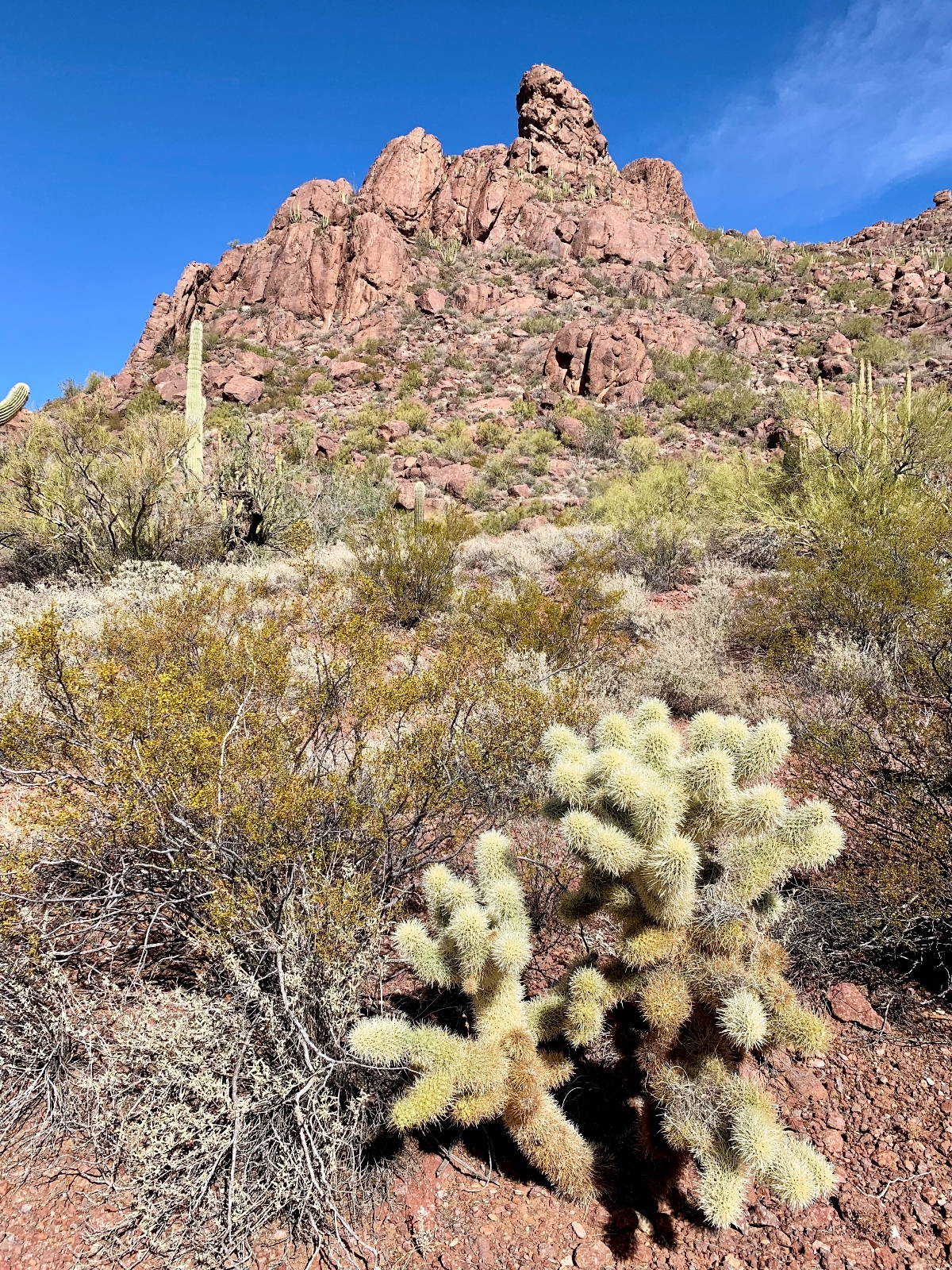
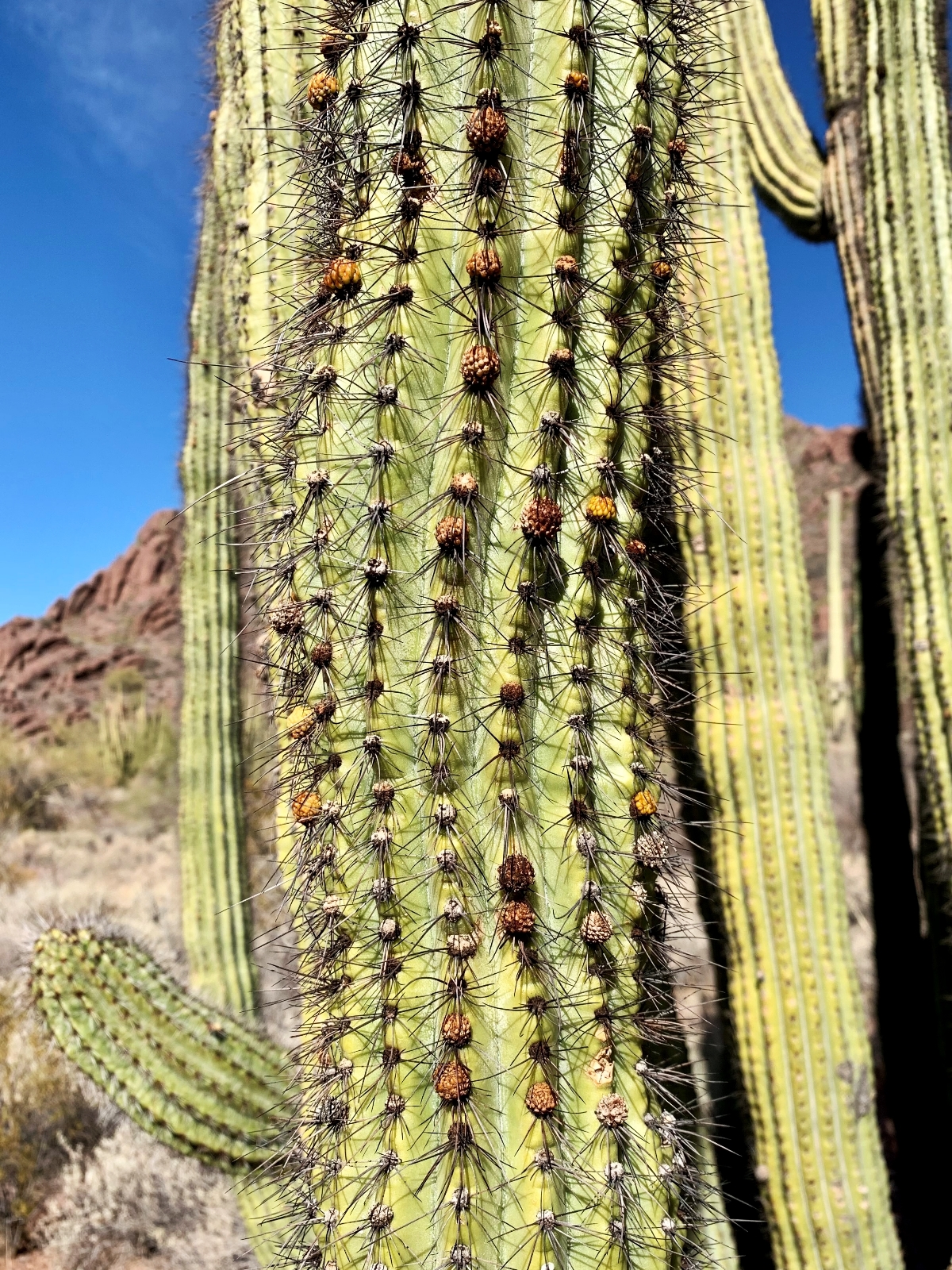
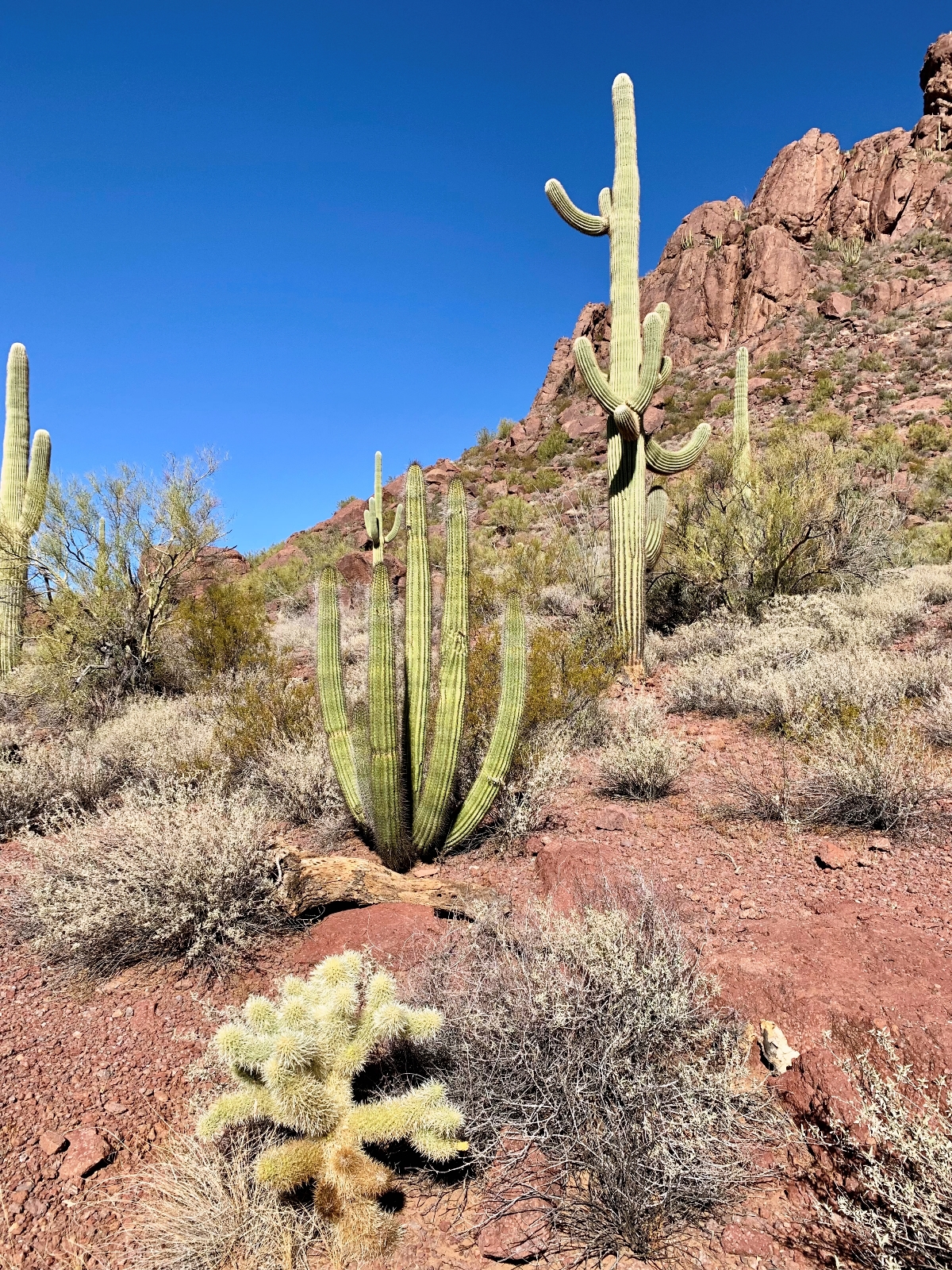
Organ Pipe Cactus National Monument is the only place in the United States to see large stands of organ pipe cacti (Stenocereus thurberi). The monument offers the best growing locations for this columnar cactus and the bulk of the U.S. population is found here. It is a warmth loving species that can be found on south facing rocky slopes. This location is critical during the winter months when severe frosts can kill the entire cactus. Optimum growing conditions exist no more than a 40-50 mile radius north of the monument.
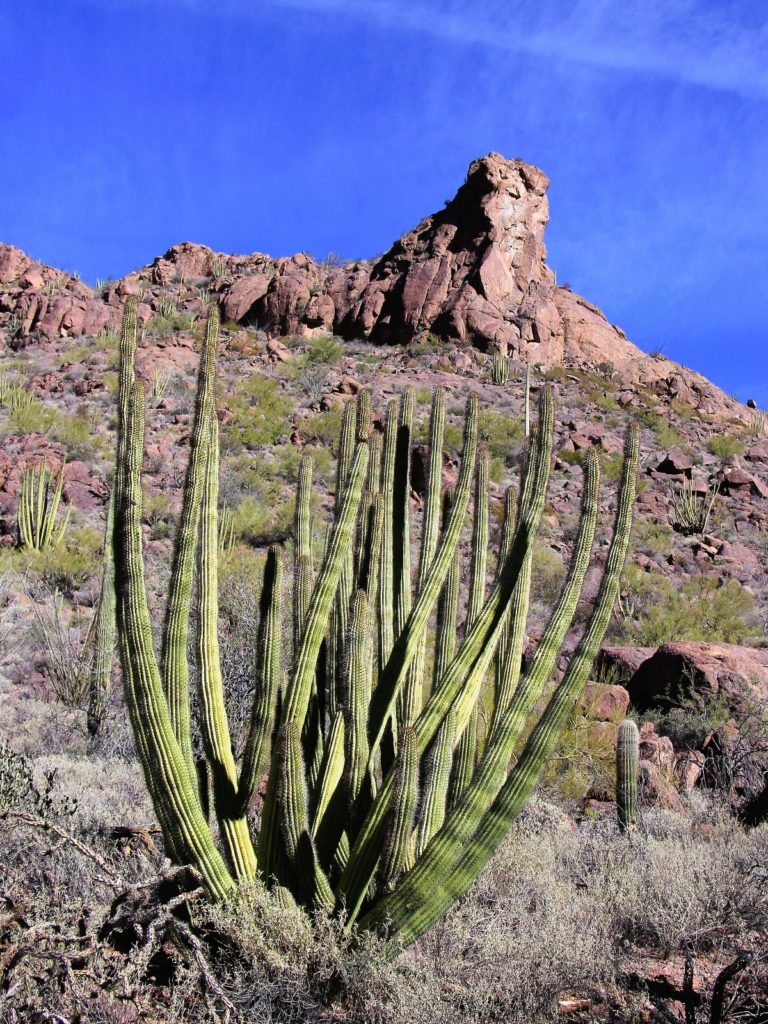
Sub-freezing temperatures will kill young tissue at the end of the organ pipe stems. When growth begins again, the results are indentations or the appearance of circular waves on the organ pipes. Bumpy or wavy pipes are a record of previous battles with unusual cold. As a result, the range of the organ pipe cactus is limited by frost and freezing temperatures. In the summer it protects itself from heat and water loss by storing large quantities of water in its pulpy flesh, using a unique photosynthesis pathway, having a water proof skin, and shading itself with its sharp spines.
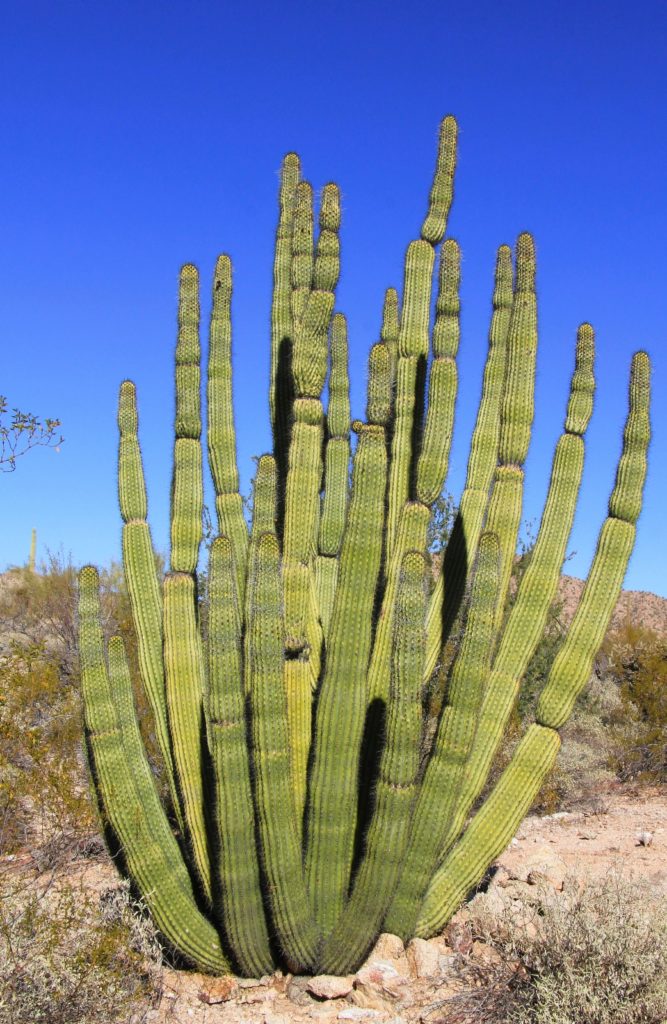
Organ pipe cactus can live to over 150 years in age. Within the monument boundaries, an average organ pipe cactus stem grows about 2.5 inches a year. Their first flowers are produced near the age of 35. They bloom in May and June, opening their flowers only at night. Flowers will close up again by mid-morning and very rarely remain open into the afternoon. This leaves very little time for daytime pollinators to feast on the sweet flower nectar. Lesser long nosed bats do most of the night pollination and have developed a unique relationship with these cactus.
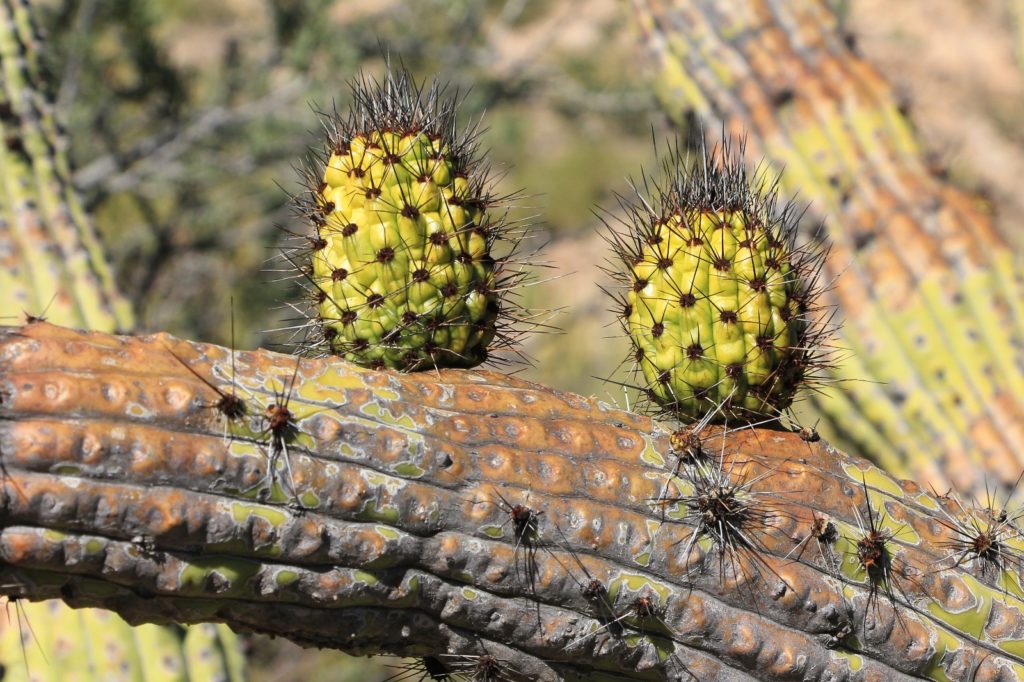
The Adventure Continues
Be sure to join us on our next adventure as we search for the rare and elusive senita cactus. And don’t forget to check out our Amazon RV and Adventure Gear recommendations. We only post products that we use and that meet the Evans Outdoor Adventures seal of approval. By accessing Amazon through our links and making any purchase (even things as simple as toothpaste!), you get Amazon’s every day low pricing and they share a little with us. This helps us maintain this website and is much appreciated!
